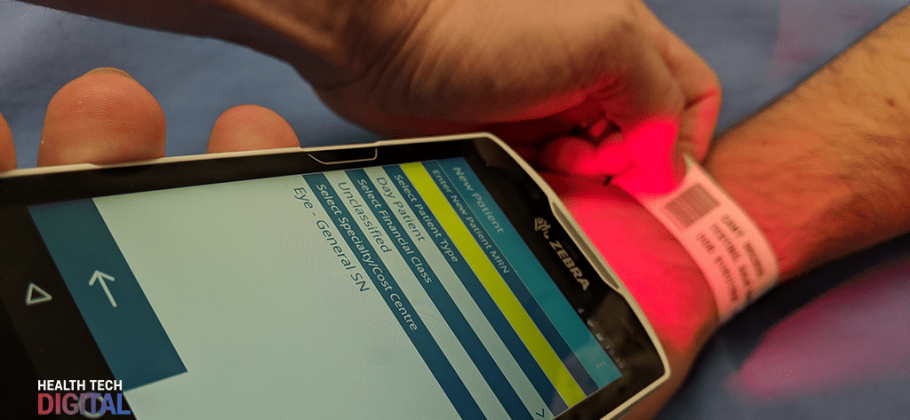At a glance
The challenge
- Requirement to save time, spend and improve materials management
- Enhanced traceability to improve patient safety
The solution
- h-trak system supported by eCat and
- Handheld scanners capture patient, procedure and consumable details
- Auto-replenishment system raises stock requests
The benefits
- Reduction in stock and wastage
- Ability to compare procedure costs, identify savings and make process changes
- Reduction in admin, more time for clinical tasks
- Revenue increased from accurate recharging
- Increased patient safety through ‘Track and Trace’ functionality.
The challenge
The trust had a number of different stock management systems for wards and theatres, which were time- consuming and unwieldy to manage. Like most other NHS trusts, the University Hospitals of Derby and Burton NHS Foundation Trust ( UHDB) needed to control spend, make savings and maximise the amount of revenue brought in through recharging. Existing systems did not allow the trust to develop accurate patient-level costing and financial control for stock and stock usage.
It was also difficult to trace items implanted or used on patients, for recall purposes, as this involved a manual process. To protect patient safety, a faster and more efficient tracking process was required.
The solution
Working closely with the trust, in 2014 Prospitalia h-trak developed an automated General Theatre supply chain solution comprising materials management and procedure costing using the h-trak system, underpinned by a comprehensive database of over 1.2 million barcoded items.
Core to the solution is the patient – and the importance of capturing data at the point of surgical care. Using the h-trak handheld scanner, staff at the trust now record details of the patient from the wristband before capturing all consumables, instruments and implants; the staff involved and the actual (rather than planned) OPCS codes – ready for costing.
The h-trak materials management software within the theatre stock rooms then detects stock usage so that stock requests can be sent to UHDB’s procurement system.
Having rapidly learned the value that procedure-level information brings, the trust undertook a phased roll-out out of the h-trak system so it is now in full use across all 39 operating rooms, labs or procedure rooms.
To date UHDB has captured and costed over 180,000 procedures.
In early 2016 Derby Teaching Hospitals was elected as one of the six Department of Health Scan4Safety demonstrator sites – and in September 2017, the trust was independently audited and acknowledged as the first site to successfully meet the required GS1 and PEPPOL Scan4Safety standards for materials management, purchase-to-pay and product recall.
The benefits
As well as key patient safety improvements delivered by their Scan4Safety implementation, the trust has realised financial benefits of over £1.6 million and are on course to exceed their original forecasted projection of attaining a 4:1 ‘Value for Money’ ratio.
Stronger stock and cost control
With a more efficient and streamlined stock management system, it has also been possible to reduce the amount of stock held, freeing up storage space.
Reductions in the amount of non-stock spend have been achieved – and with flagged expiry dates, wastage prevented. The automated replenishment system has significantly reduced last-minute ordering, allowing orders to be grouped into as few deliveries as possible, cutting down on costs.
Automating the transmission of POs and invoices simplified the payment process and lowered the overall cost of procurement. The trust is proud to be the first in the NHS to place an order for medical supplies using the PEPPOL network.
Saving staff time
Using h-trak, significant clinical admin time has been saved. Reportedly only 20 minutes per week is spent on ordering, compared to 3 hours previously, allowing more time for patient care. Fewer stocktakes are required and take just half a day, compared to 1.5 days before the new system.
Greater collaboration working
h-trak’s rich source of procedure information, provides a foundation for engagement between clinicians, finance and procurement managers – allowing them to compare costs and identify opportunities for greater efficiency.
Utilising this data also helps the trust monitor clinical variation. Recent examples include changes in catheters, jaw bones and sterile screws.
More accurate recharging
In the past, missed coding opportunities have impacted on the trust’s ability to recharge CCGs but with real-time costing data, invoices are raised quickly and more accurately.
Clinical teams are more aware of the need to capture all procedure details. As a result, the trust has seen a sizeable uplift in improved coding, which in turn has led to an increase in recharged revenue.
Better patient safety
h-trak’s ‘Track and Trace’ functionality automatically captures implant lot or consumable serial numbers, and logs the instrumentation set so that patients can easily be recalled in the event of an issue. The scanner also flags up if equipment is out of date. Recall times have significantly reduced and in less than 30 minutes a Recall report can be generated – and if necessary action taken.
“Implementing the h-trak system at Derby was originally meant to just improve stock usage and control information,” notes Kevin Downs, Director of Finance & Performance. “It has now evolved into a system that improves patient safety in theatres and produces detailed patient-level costing information.”
“Utilising scanners in theatres provides me with extra reassurance: we now capture an accurate patient level record of exactly which consumables and instruments we have used, as well as real-time records of the procedures,” says Keith Jones, Clinical Director of Surgery.
For more information about h-trak and the implementation at University Hospitals of Derby and Burton NHS Foundation Trust call the Prospitalia h-trak account team today on:
+44 (0)330 127 6240 or visit www.prospitalia-htrak.com













